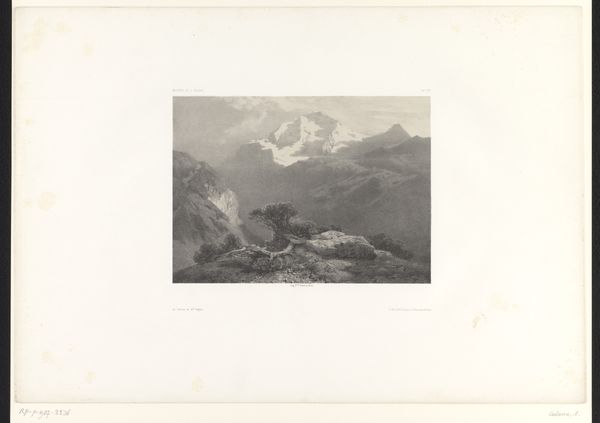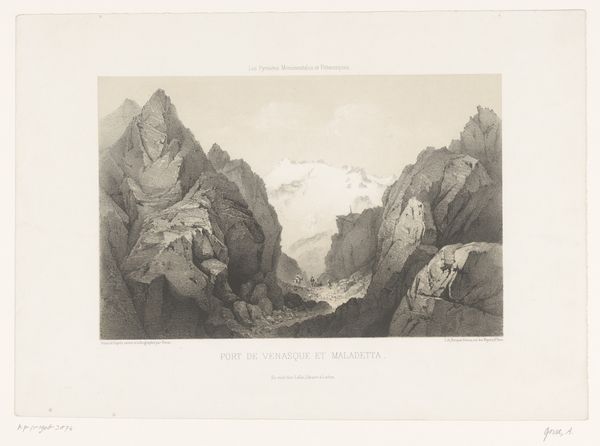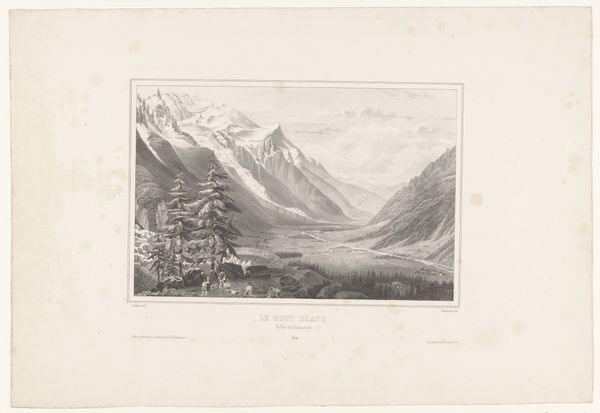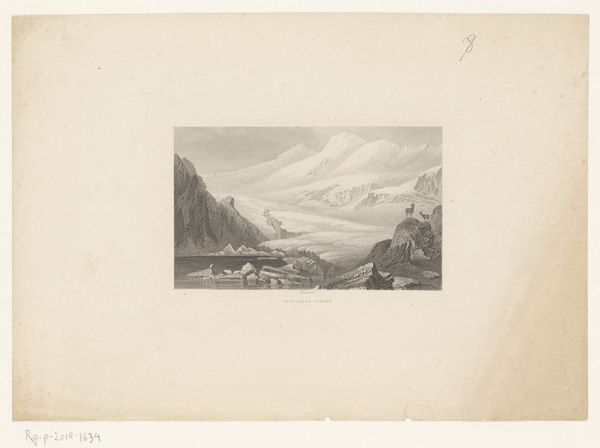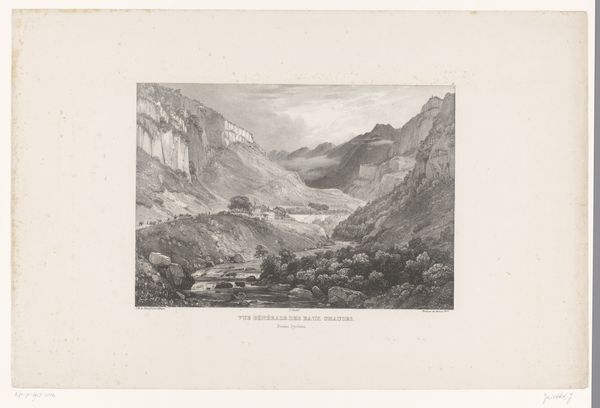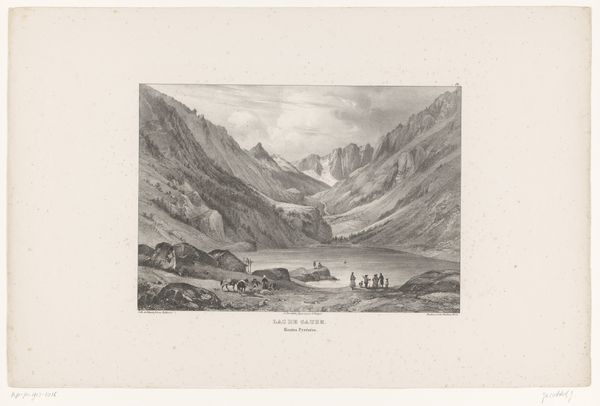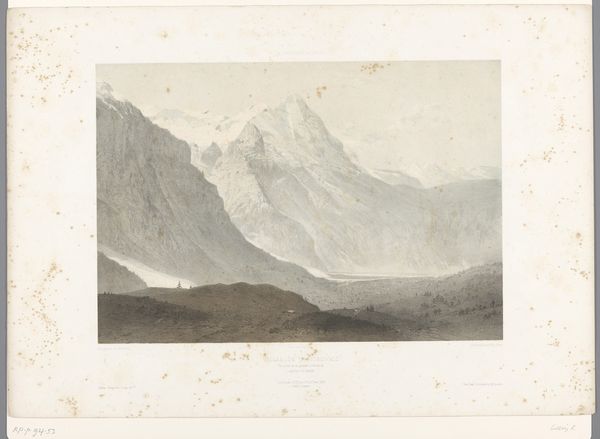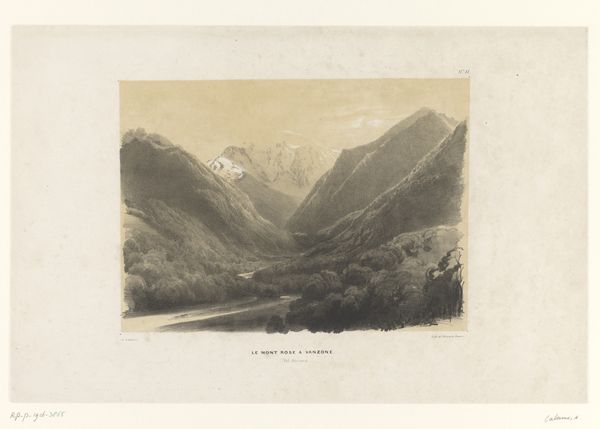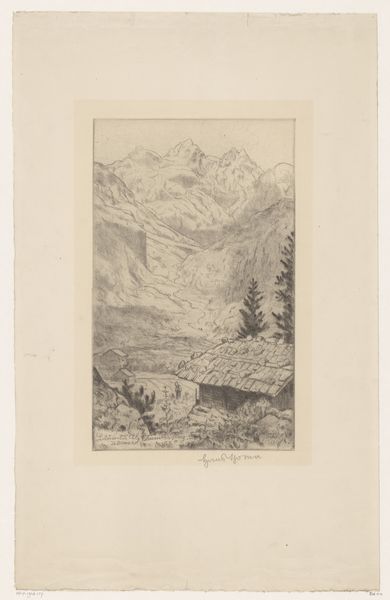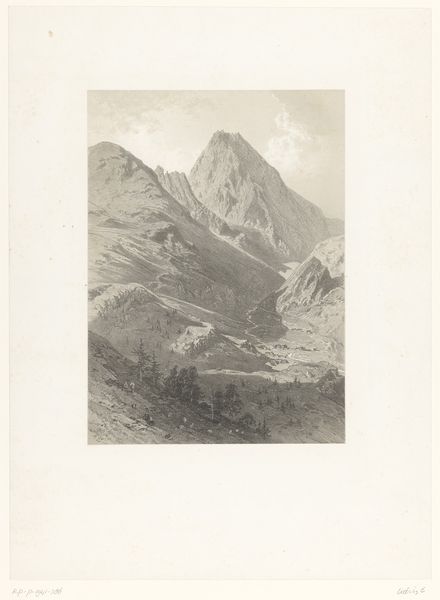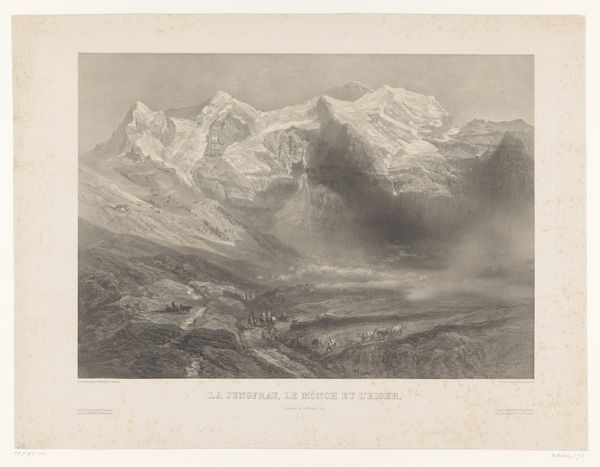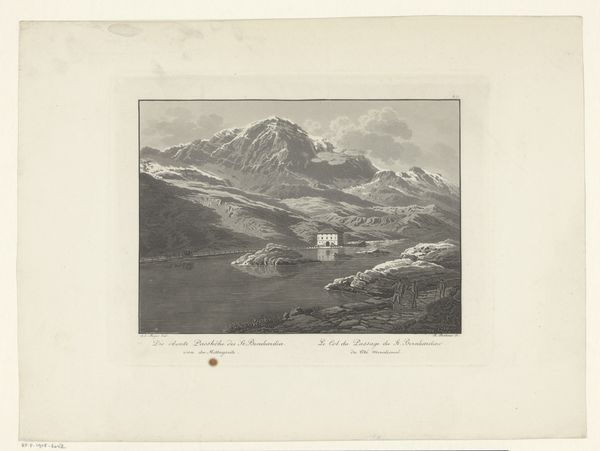
print, etching, engraving
# print
#
etching
#
old engraving style
#
landscape
#
romanticism
#
history-painting
#
engraving
Dimensions: height 359 mm, width 547 mm
Copyright: Rijks Museum: Open Domain
Editor: This print, "Zicht op de Pic du Midi d'Ossau," created between 1835 and 1836 by Louis-Julien Jacottet, utilizes etching and engraving techniques. I'm immediately drawn to the sublime quality of the landscape, but I am curious, how do we contextualize such a romantic vision within its historical moment? Curator: That's a great starting point. Think about the rise of Romanticism coinciding with the development of mass media. How did the production and distribution of images like this affect the perception and understanding of landscape, nature, and national identity? Editor: So, you're suggesting that it wasn't just about aesthetic appreciation, but also about shaping public perception? Curator: Precisely! Consider who had access to these prints. Was it primarily the aristocracy and rising middle class? And how might that access influence their understanding of the region, possibly fostering a sense of ownership or national pride related to even far-off territories? How do these images contribute to larger colonial or political narratives of the time? Editor: That's fascinating. I hadn't considered the role of printmaking in disseminating political ideas. It reframes my understanding of the artwork. Is the landscape, therefore, not just scenery, but a political stage? Curator: Absolutely. It makes you wonder about the subjects omitted, the social realities of those who lived in that region, beyond a picture-postcard aesthetic of grand mountain scenery. Whose stories aren't being told? Editor: This definitely challenges my initial romantic interpretation. Now I see it as an idealized, and potentially biased, representation, filtered through a particular social lens. Curator: Exactly! By exploring these contextual layers, we move beyond simply admiring the aesthetic and engage with the complex historical and socio-political forces that shaped its creation and reception. Editor: Thanks, that has given me a totally different perspective.
Comments
No comments
Be the first to comment and join the conversation on the ultimate creative platform.
